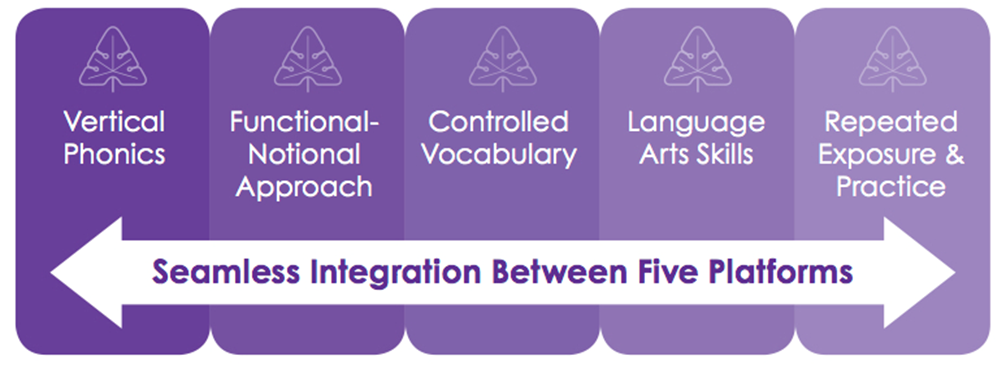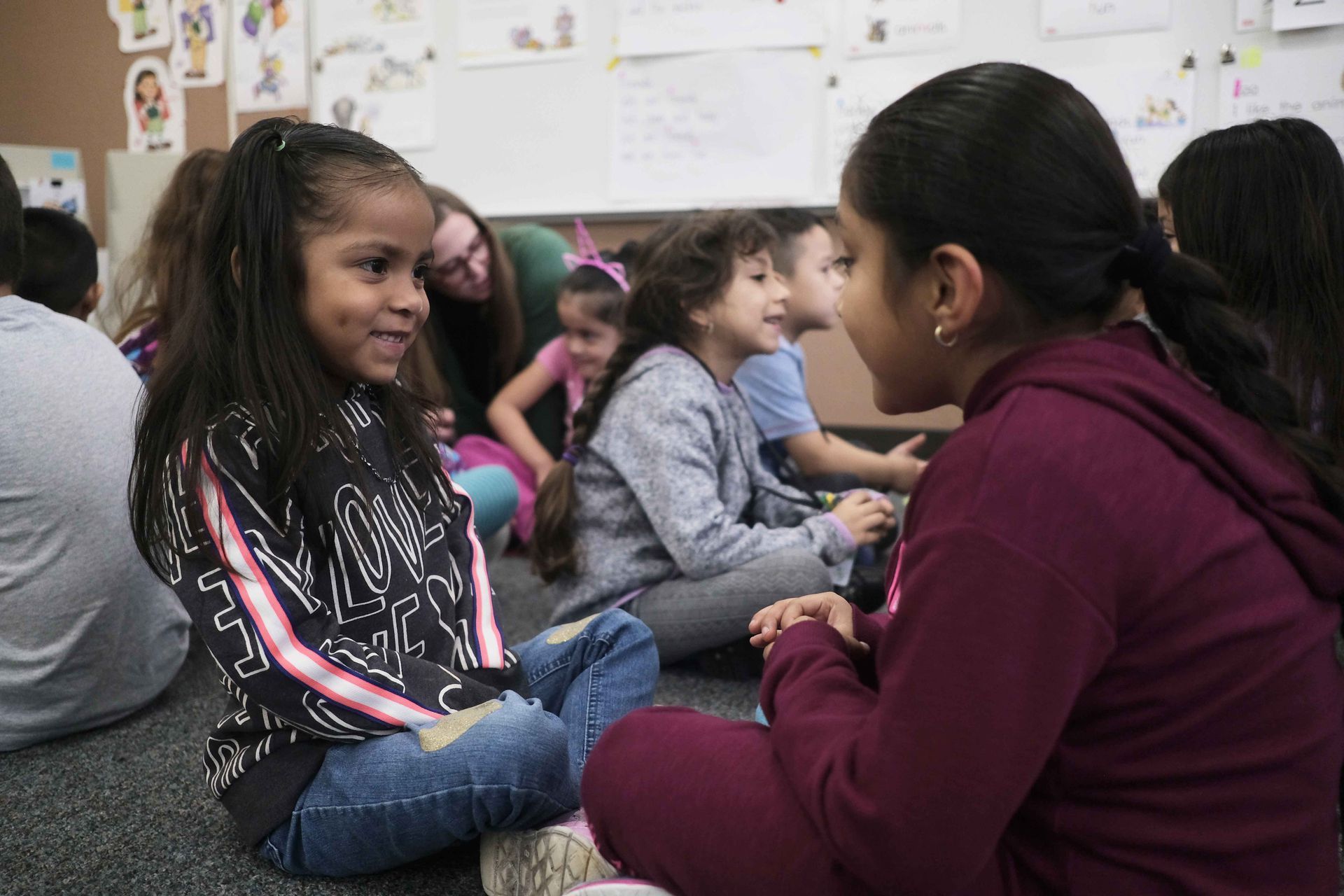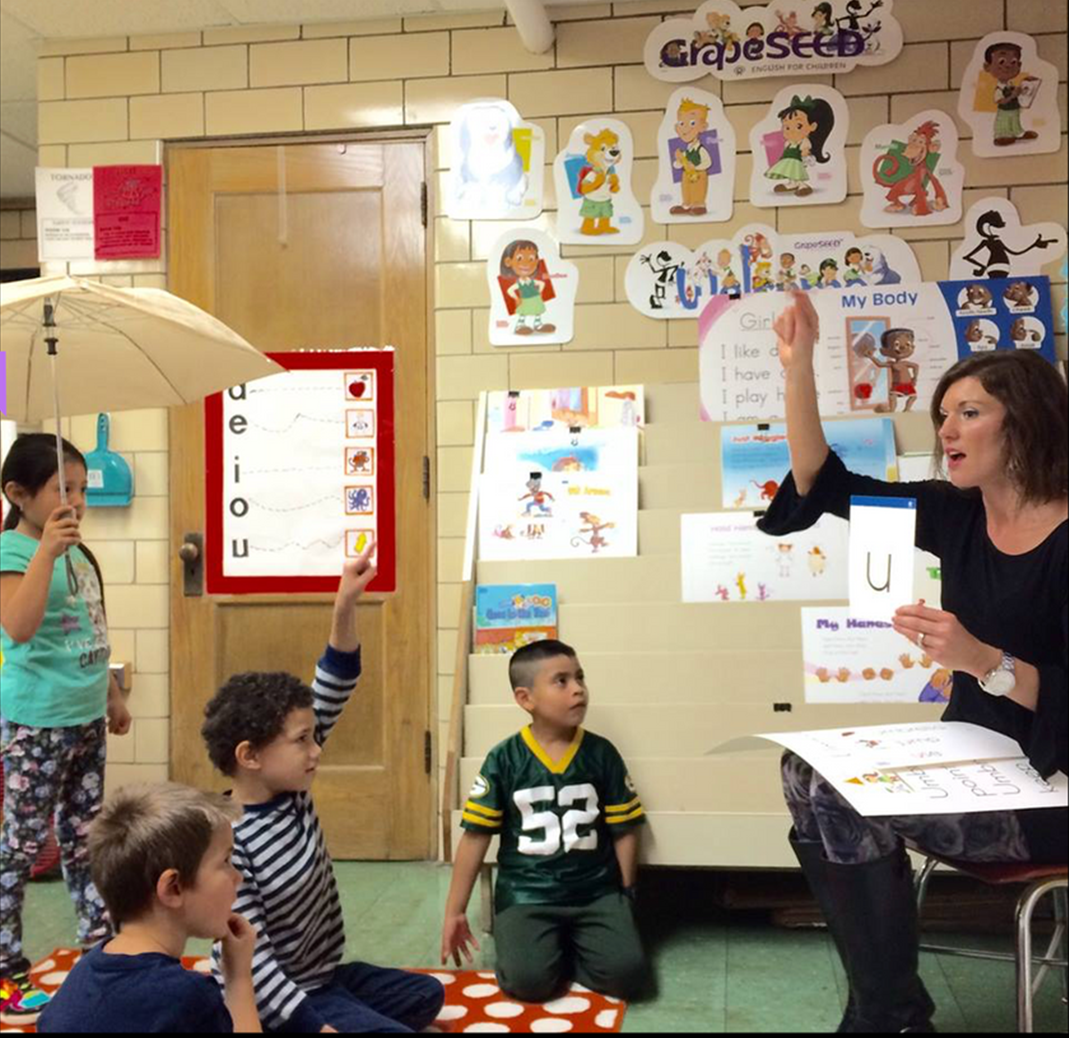Methodology
Five Platforms

GrapeSEED is unique because it was created by building on the foundation of five carefully integrated platforms: Vertical Phonics, the Functional-Notional Approach, a Controlled Vocabulary chosen specifically for students, Language Arts Skills that support the development of oral communication ability, and an opportunity for Repeated Exposure and Practice. It is the purposeful way in which all five of these platforms are seamlessly integrated that make GrapeSEED the best way to develop English oral language skills.
Natural Language Aquistion
Following the key principles of Natural Language Acquisition, GrapeSEED students learn to hear and recognize English speech—and to process and speak their thoughts—without having to first think in, and then interpret from, their heritage or first language. By making English acquisition meaningful and useful for children engaging in conversation with others, GrapeSEED makes learning interesting- students want to learn. By teaching English in the way that language is naturally acquired (through continuous exposure), GrapeSEED instills motivation and students quickly build fluency.

Functional Notional
GrapeSEED is based on a communicative approach and a carefully organized, functional-notional framework -- the same framework on which WIDA 2020 is based.
This framework was chosen for the GrapeSEED curriculum to assure communicative ability. As such, it also provides a fun, engaging environment in which all academic objectives are taught (i.e., phonemic and phonological awareness, vocabulary, phonics, spelling, and proper syntax). Students learn situational dialogue, correct use of tenses, proper use of irregular verbs, etc., through entertaining components including songs, chants, poems, big books, action activities and stories.
THE GRAPESEED
Framework
GrapeSEED equips students with the skills necessary for complete communicative proficiency — understanding, speaking, reading, and writing.
Students start by listening to the expressions of language and associating sounds with functions. They begin to mimic sounds until they learn to reproduce them. The more students hear language functions (receptivity) and the more they use language functions (expression), the easier and faster they retrieve each language function (fluency) and communicate with known 'notions' (proficiency).

Slide title
Write your caption hereButton
Slide title
Write your caption hereButton
Slide title
Write your caption hereButton
Slide title
Write your caption hereButton
Slide title
Write your caption hereButton
Slide title
Write your caption hereButton

THE GRAPESEED
Methodology
GrapeSEED is focused on practical use of concepts, vocabulary, language functions, and meaning comprehension instead of the memorization of grammatical rules and structures.
Students learn to hear and recognize English speech— and to process and speak their thoughts—without having to first think in, and then interpret from, their native language. By making English learning meaningful and fun, GrapeSEED makes learning interesting. By teaching English in the way language is naturally acquired (through continuous exposure), GrapeSEED instills motivation and quickly builds fluency.
Ready to Start Your Journey?

6425 Living Place
Suite 200 #1021
Pittsburgh, PA 15206
Tel: 800-449-8841
Email: contact.us@grapeseed.com
© 2024 GRAPESEED INTERNATIONAL PTE. LTD.
